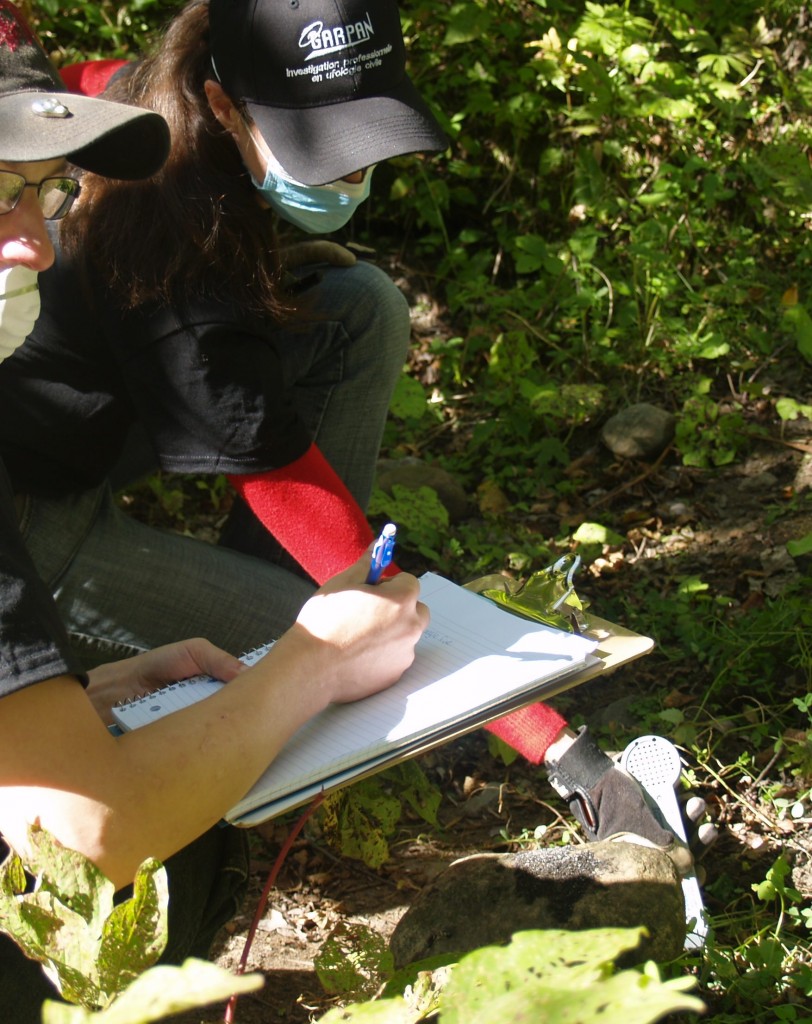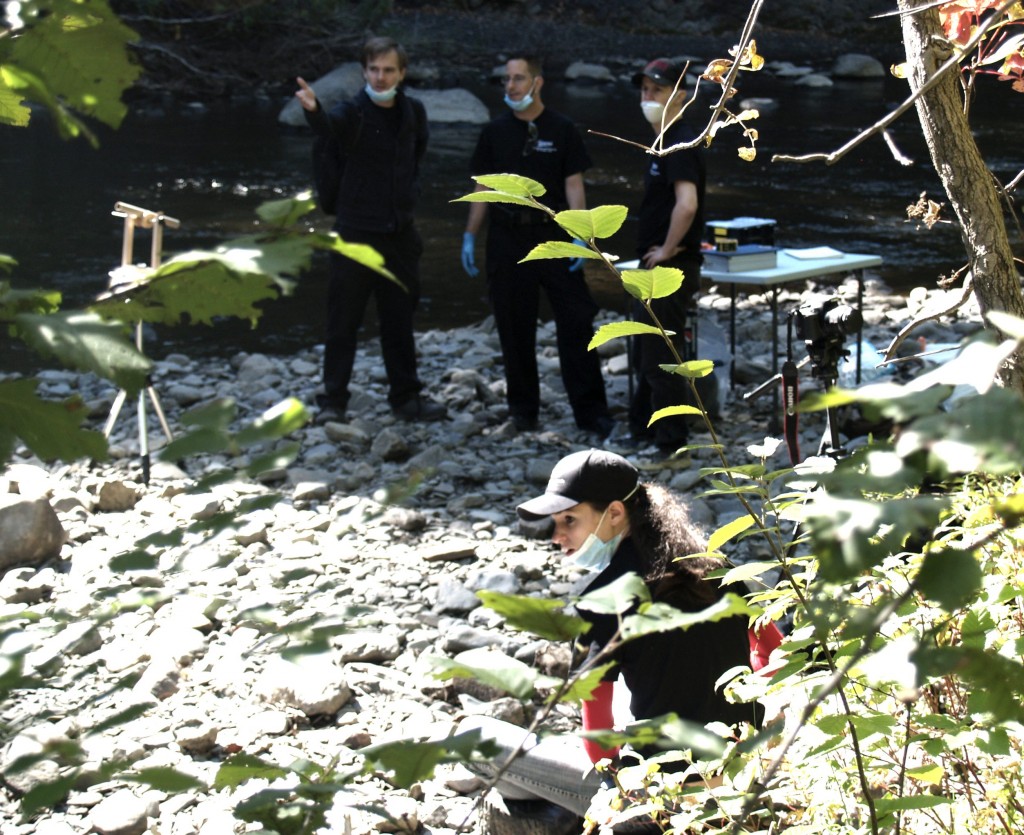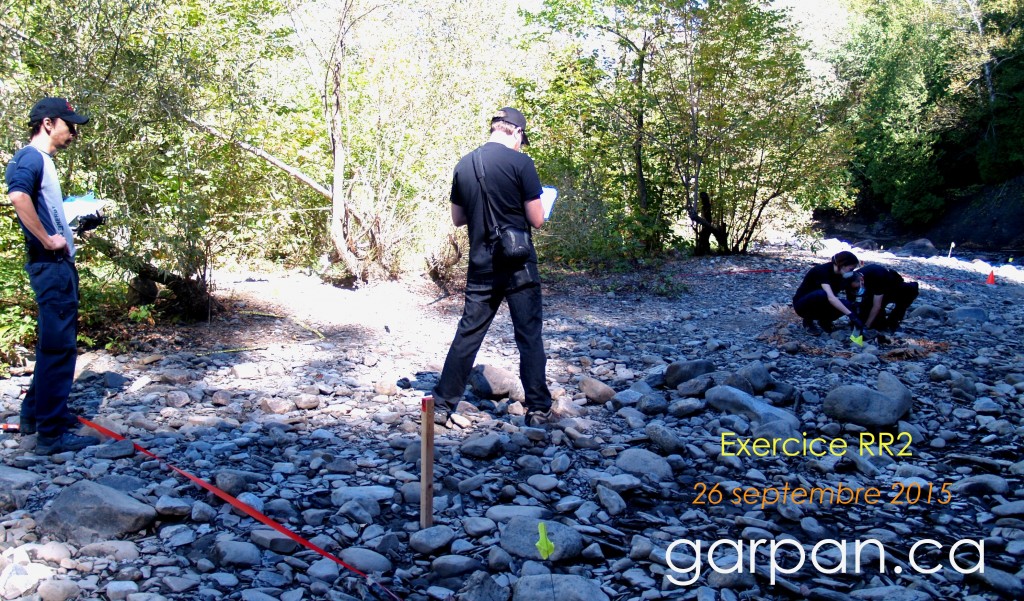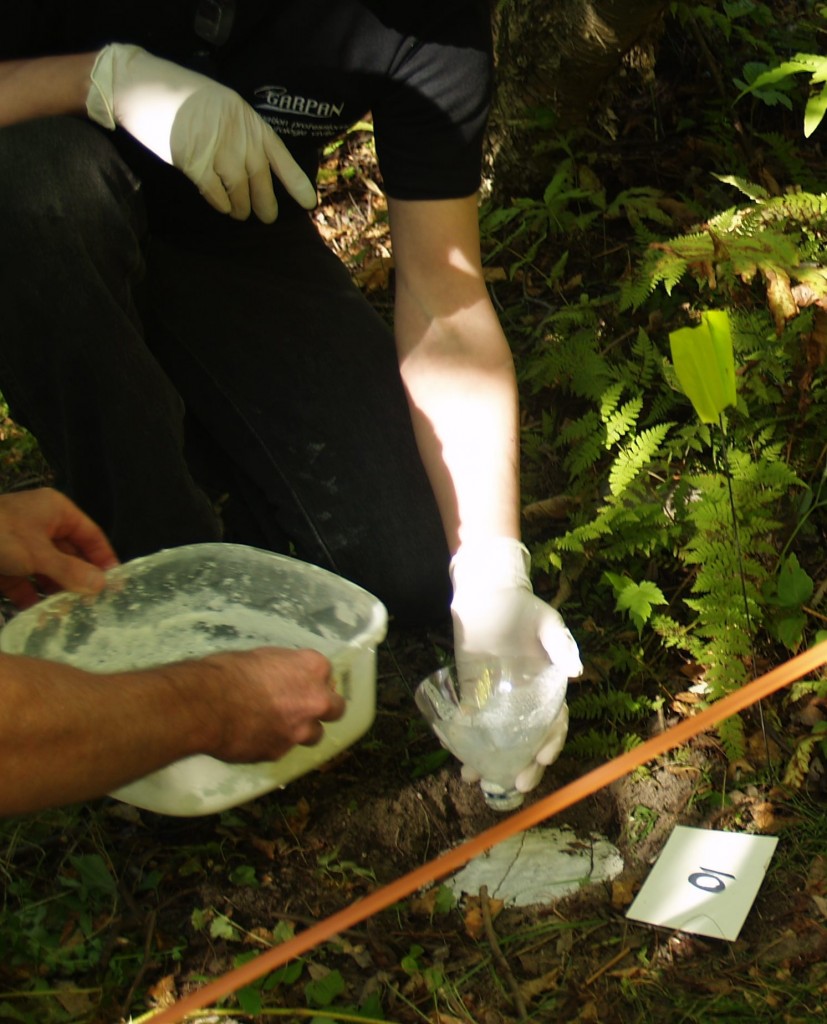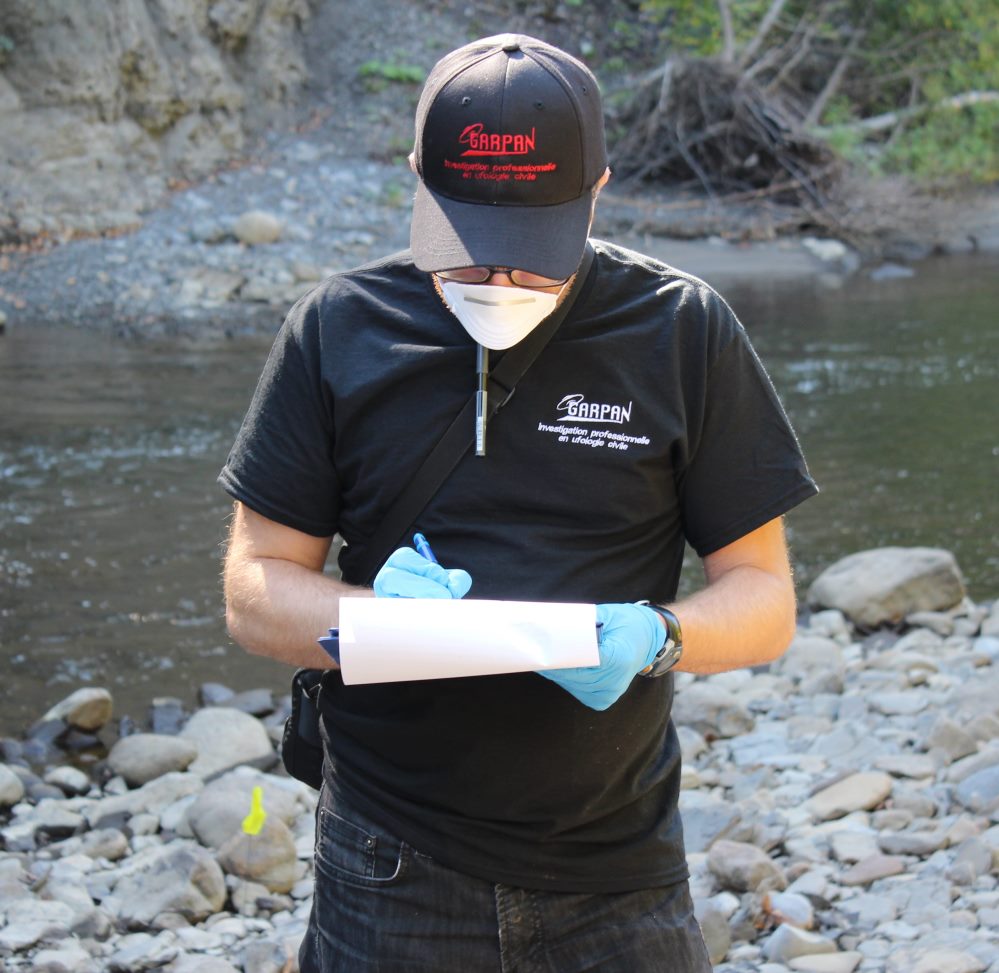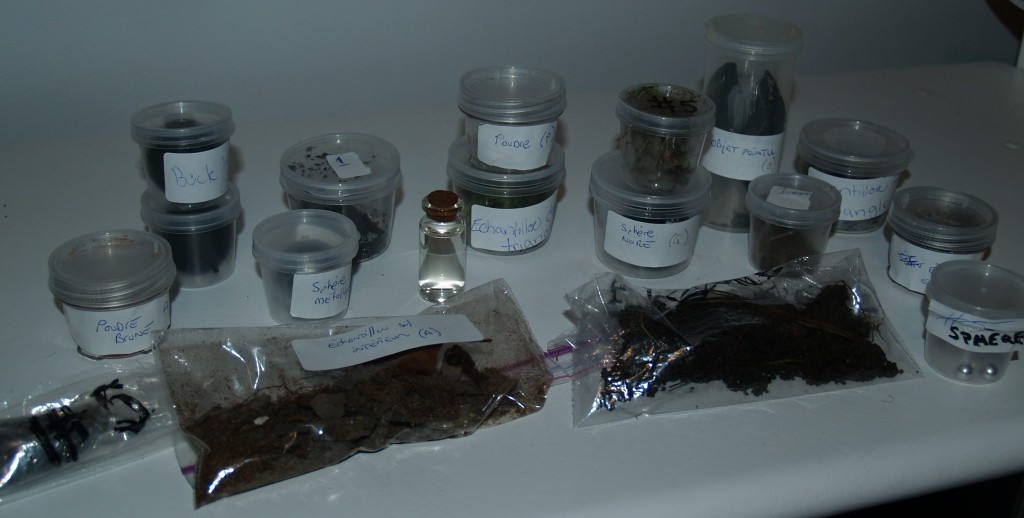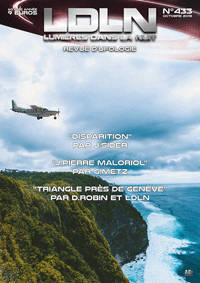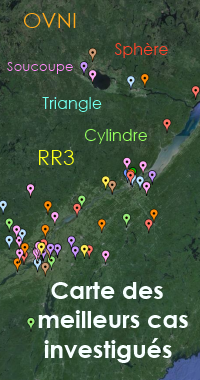RR2 a year for training d & rsquo; investigators in ufology (45 h)
As part of the formation of & rsquo; UFO investigator provided by the Garpan for a third consecutive year, we offered a "practice of RR2", c & rsquo; is to say, a simulation d & rsquo; work on a site where traces and artifacts were left by a UFO. Saturday 26 September 2015, new investigators and students (5 academics and 1 technician) participated in & rsquo; activity directed by Yann Vadnais.
For s & rsquo; register for training :
or garpan.ufologie@gmail.com 581-307-7726
*
Procedure & rsquo; an intervention RR2 site
First stage : tackle and secure the site
- □ Measuring the levels of radioactivity : two people enter the site, using a Geiger-. The coach entered the meter rate each 20 m, 10 m then 5 m getting closer to the main track.
- □ Identify if there are traces of biological hazards : dead animals, unknown substances, etc.. Report these dangerous zones to exclude accession if necessary.
- □ Delineate a security perimeter : assess risks Site, establish (3) three security areas (green-yellow-red).
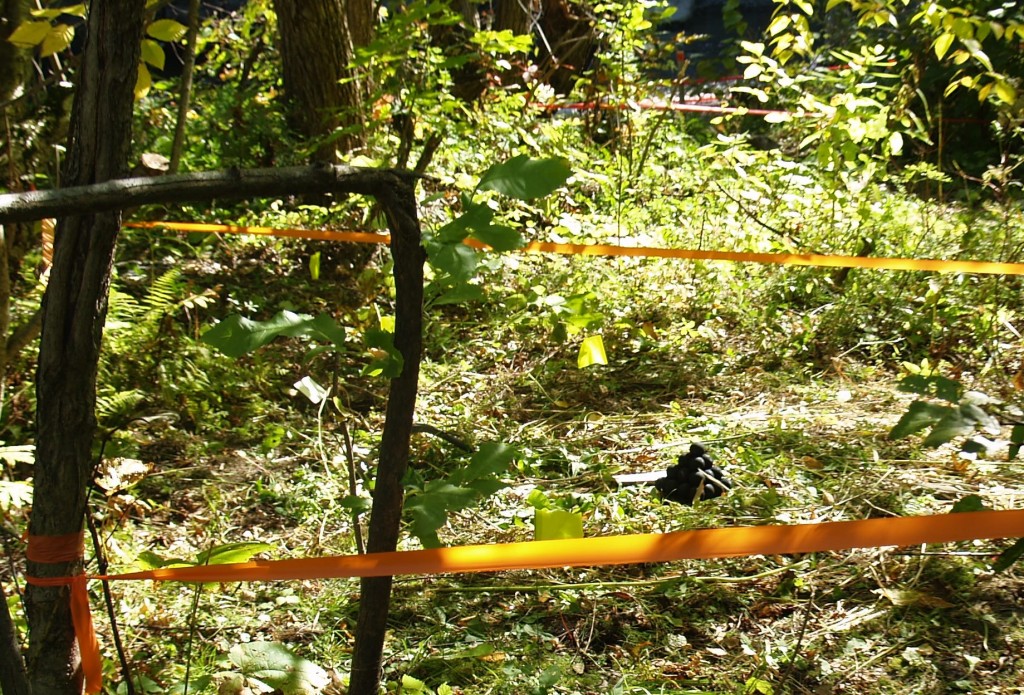
Second stage : establish operation bases
- □ Films : cameraman must know what to shoot when filming. Place back a second camera on a tripod shooting the whole operation.
- □ Peering at close range ground track : observe, details and noted his first impressions in the operation diary. Early photographs. Predict how the next steps will take place.
- □ Mark out the Accession breach site : pulling a ribbon tied on poles to indicate which path borrowed to intrude into the center of the ground track. Thereafter, track will be stomped in full, but it is necessary to 'trample' on track As we search and the pacing.
- □ Take measures the heat still hot items (with the electronic thermometer).
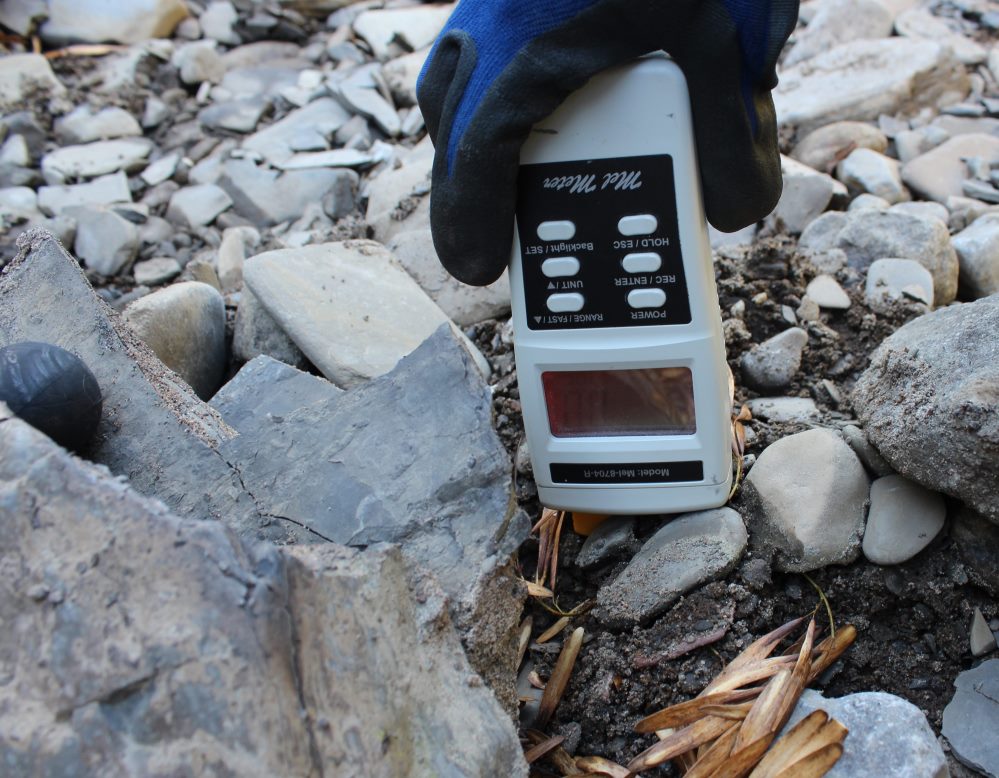
- □ Once inside track, scan every detail and identify any visible artifacts to avoid the trampling.
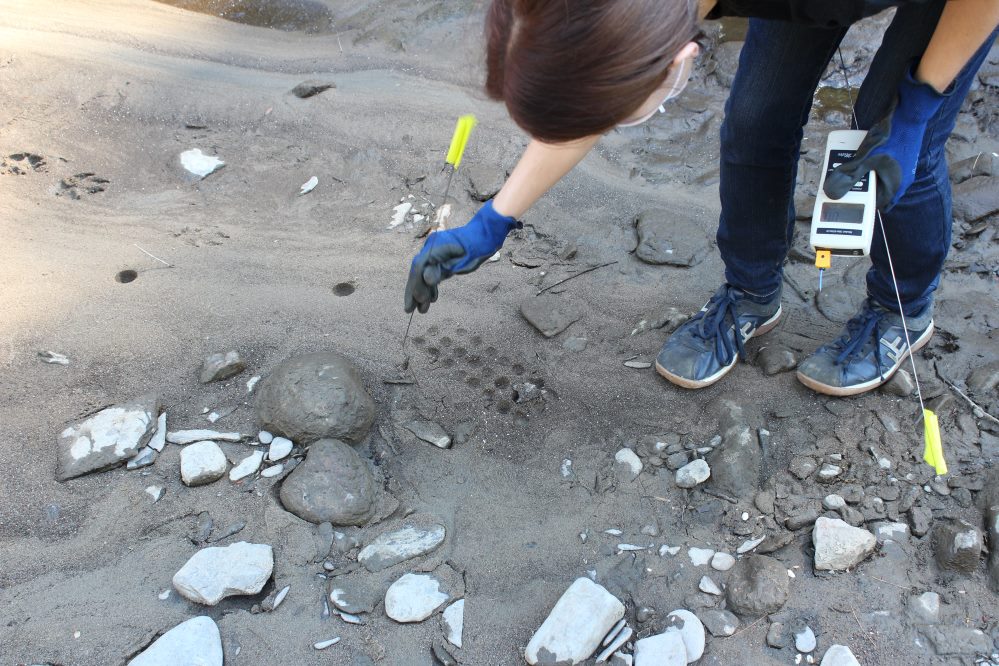
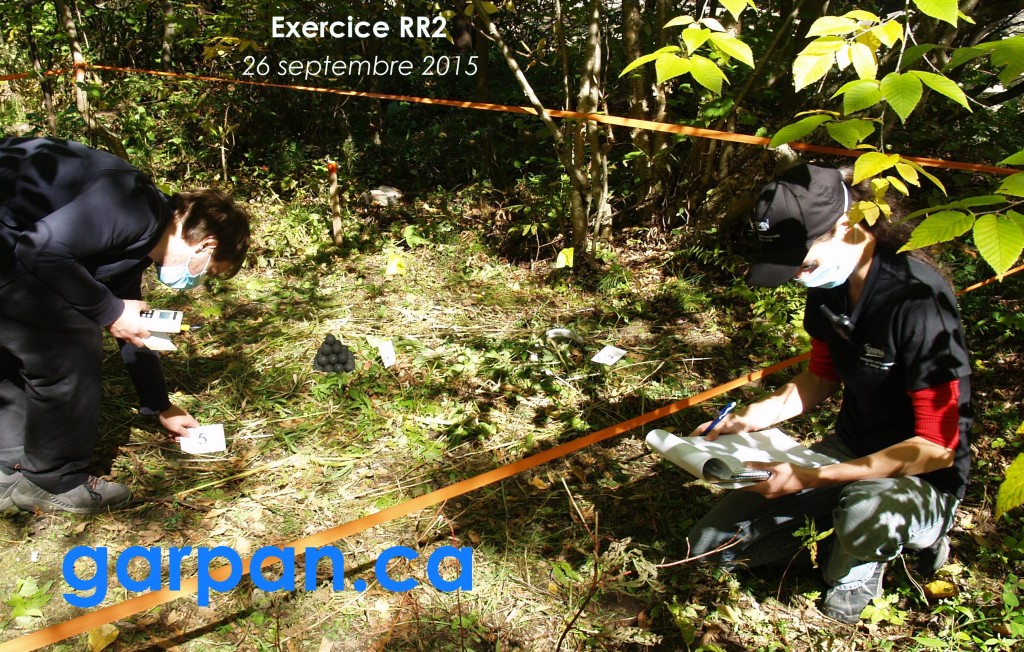
- □ Take a dive site in photography. Be sure not to trample nothing.
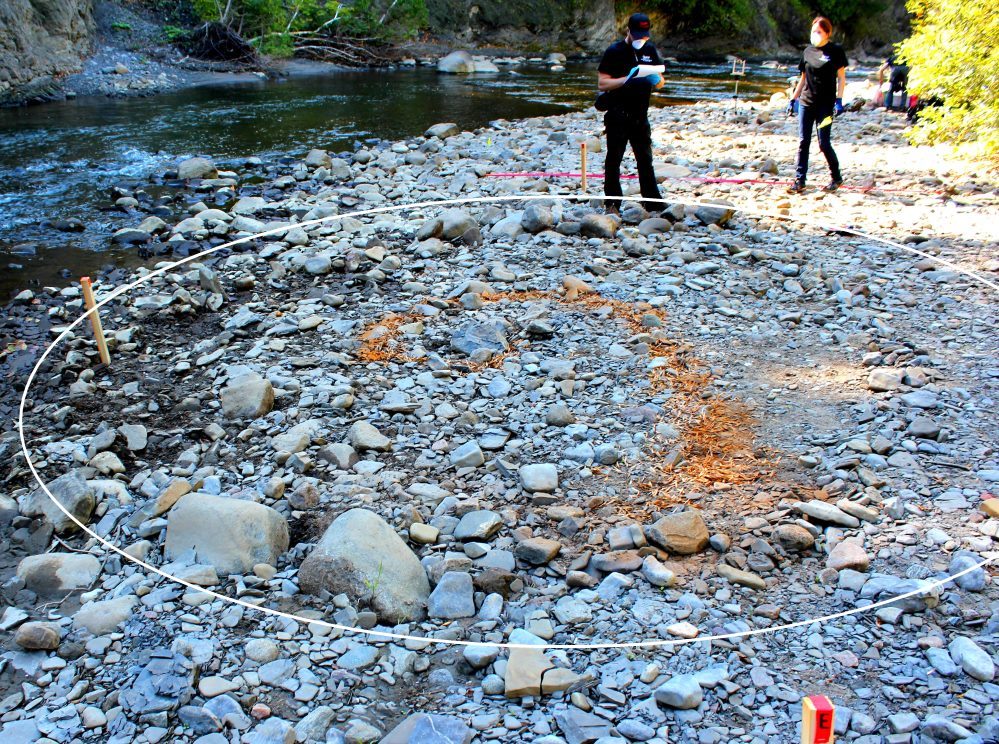
- □ Remove the first cartons with identification marks or artefacts.
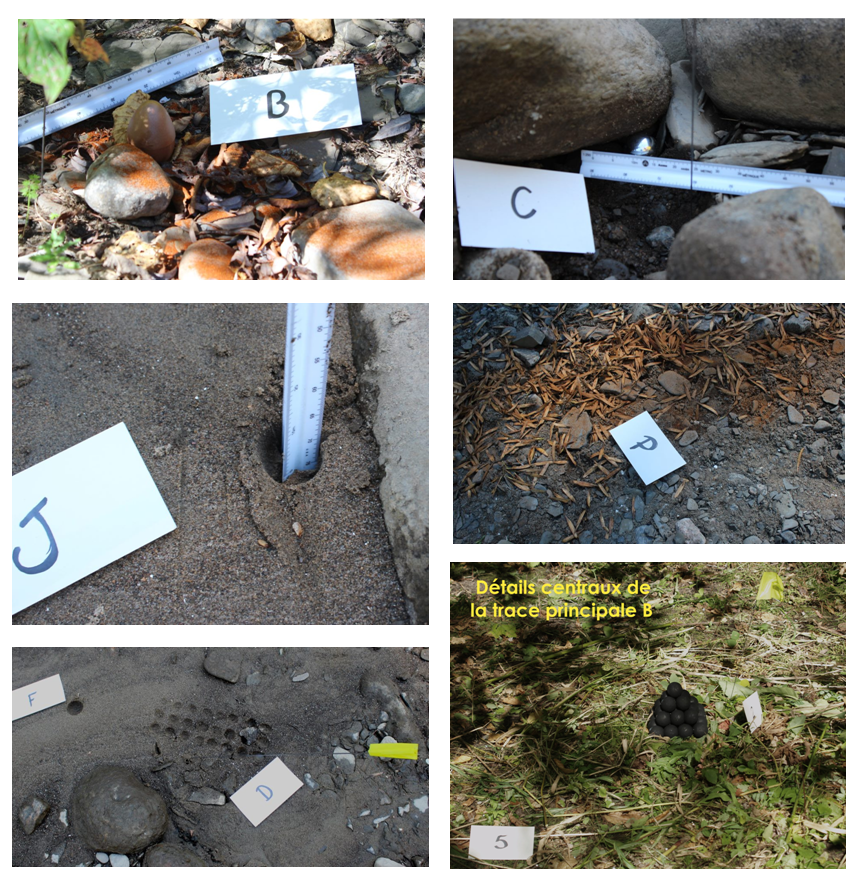
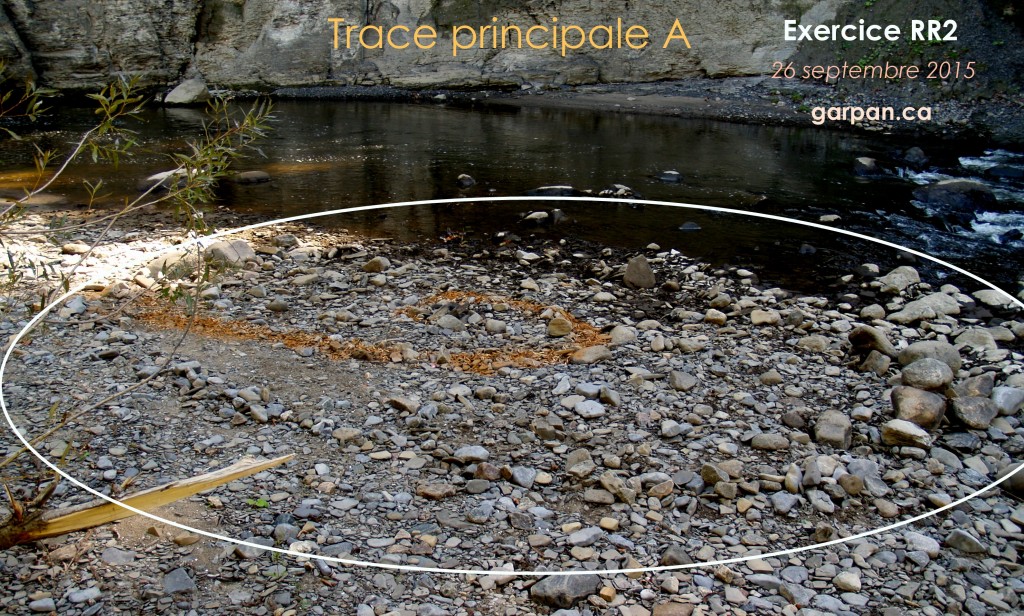
- □ Determine the center of the track : a stake on which one can attach a tape measure (on wheels).
- □ Position the TAF : put the "triangulator Fixed Angle" in the center of the track, on top of the pile, and positioning the degree 0 North.
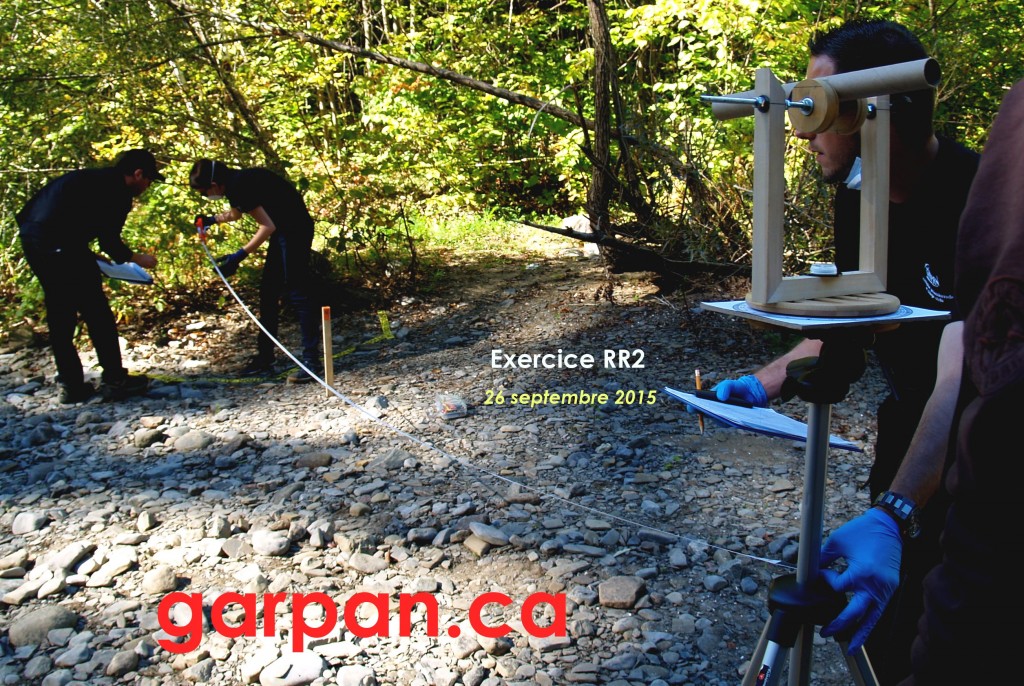
- Measuring the magnetic deflection rate with a compass.
- □ Establish the cardinal points : a person stands in the center of the track while the second moves away from 20 to 50 m to plant the stake of cardinal (record N, S, It, or O on both sides of the poles). Taking pictures of the four (4) directions, ensuring a clear view of the peg indicating the direction.
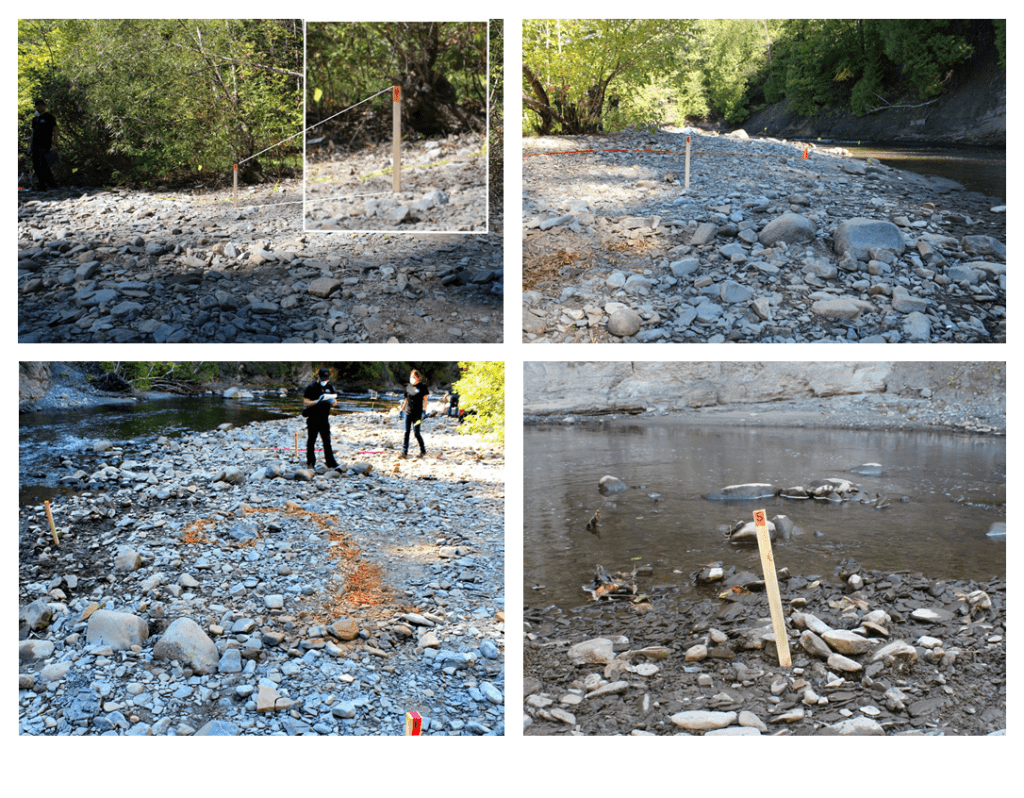
Third step : Site analysis and empirical data collection traces
- □ Duplicate track : on a metric sheet, note and draw aspects of the ground track ; to get, a colleague attached a tape measure at the central peak, and dictate each step taken (in meters) to that the layer on the data sheet. Whoever makes the sketch stands near the TAF to read the angle measurements TAF, and so realize his sketches accurately.
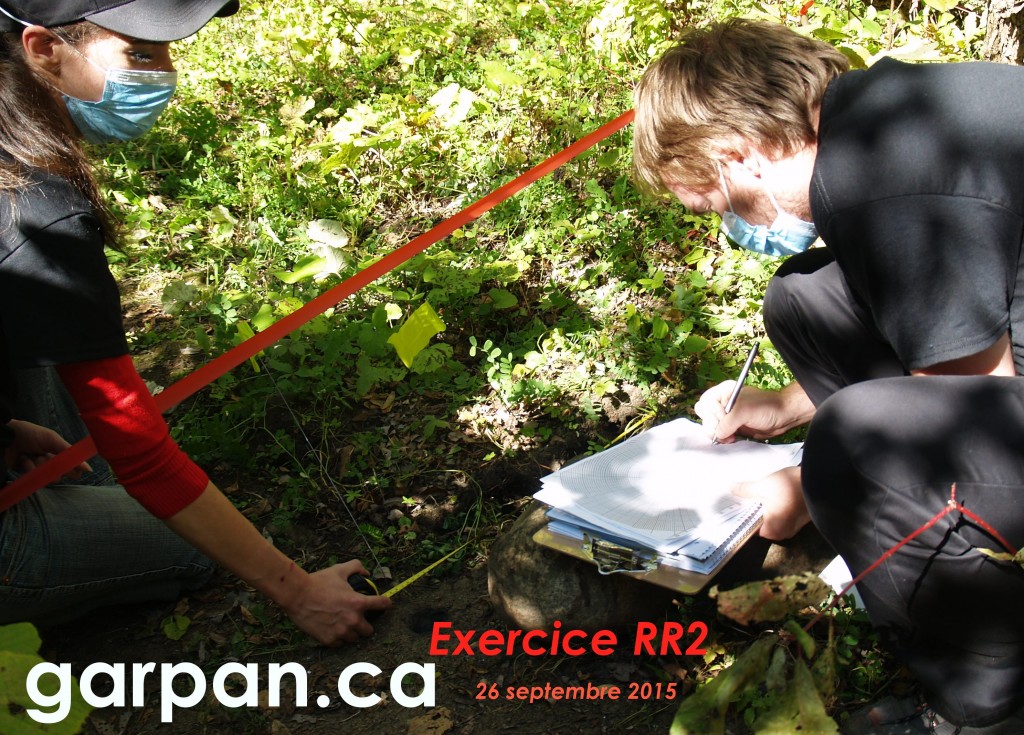
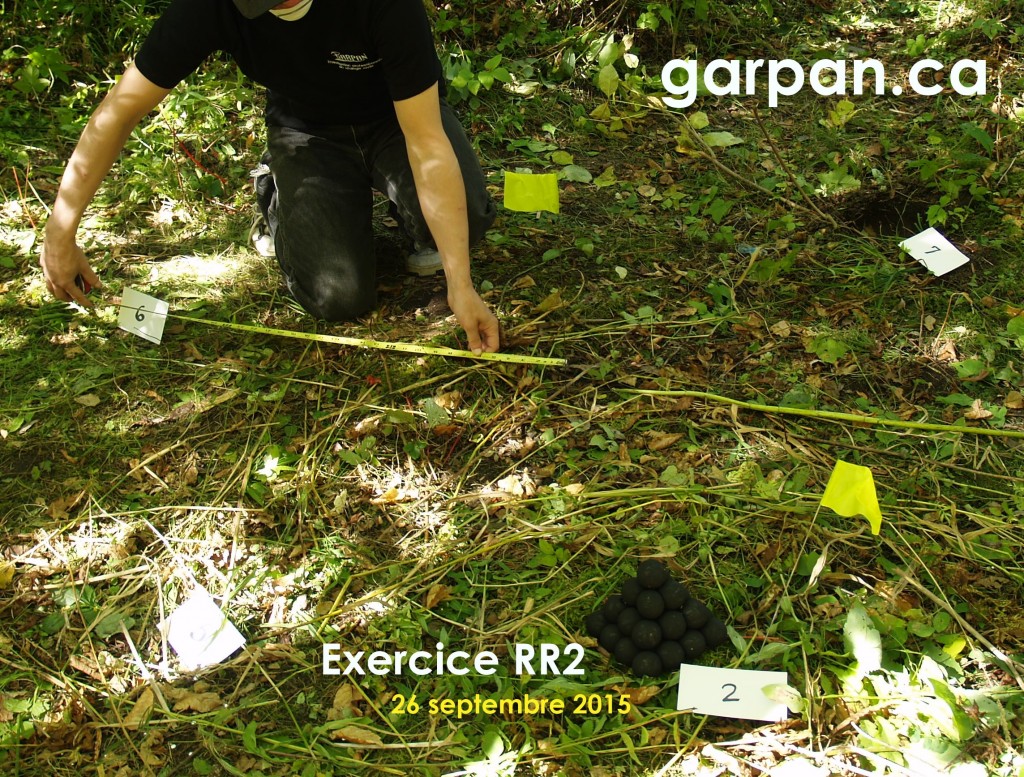
- □ Indicate on the sketch of the track the location of each of these identification cards.
- □ Sweep the field at the metal detector : ensure full cover the site (track and round up 50 m). Calibrate the instrument before use.

- □ A teammate accompanies the seeker through a metal detector and place an identification card with each discovery, while indicating its location on the map of places.
- □ If the holes are found which seem artificial, or if fingerprints were left, prepare the liquid plaster (with water and plaster of Paris), then pour 1) into the holes, 2) on the prints. Insert into the molds metal rods to better remove them when cooled.
- □ Photograph each artifact or traces identified by cards, taking care to incorporate a visual metric ruler.

- □ Look around the track in order to find traces of secondary or other traces close (as far as necessary : 25, 50, 500 m). Indicating those other traces on the scene sketch.
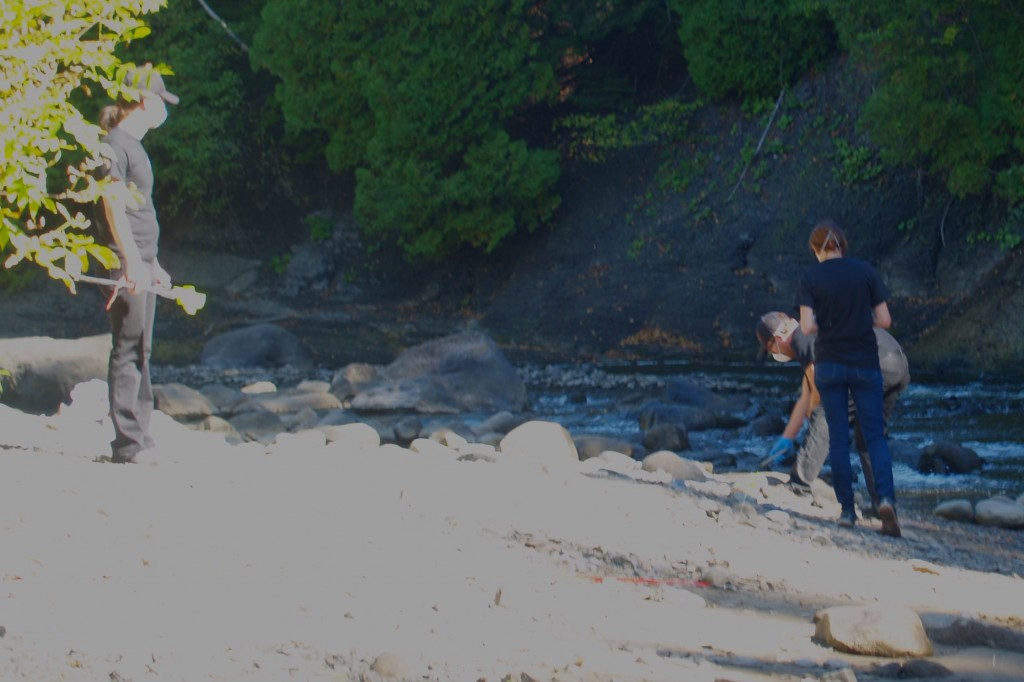
- □ Collect samples : insects, Herbs, Soil coring. Show on map or sketch of the track where the samples are extracted.
- □ Collect samples-standard : taking external sample of soil like elements to those within the track (for comparison). Indicate on the sketch where the samples are taken stallions.
- □ Fit the big wooden artefacts in appropriate cases.
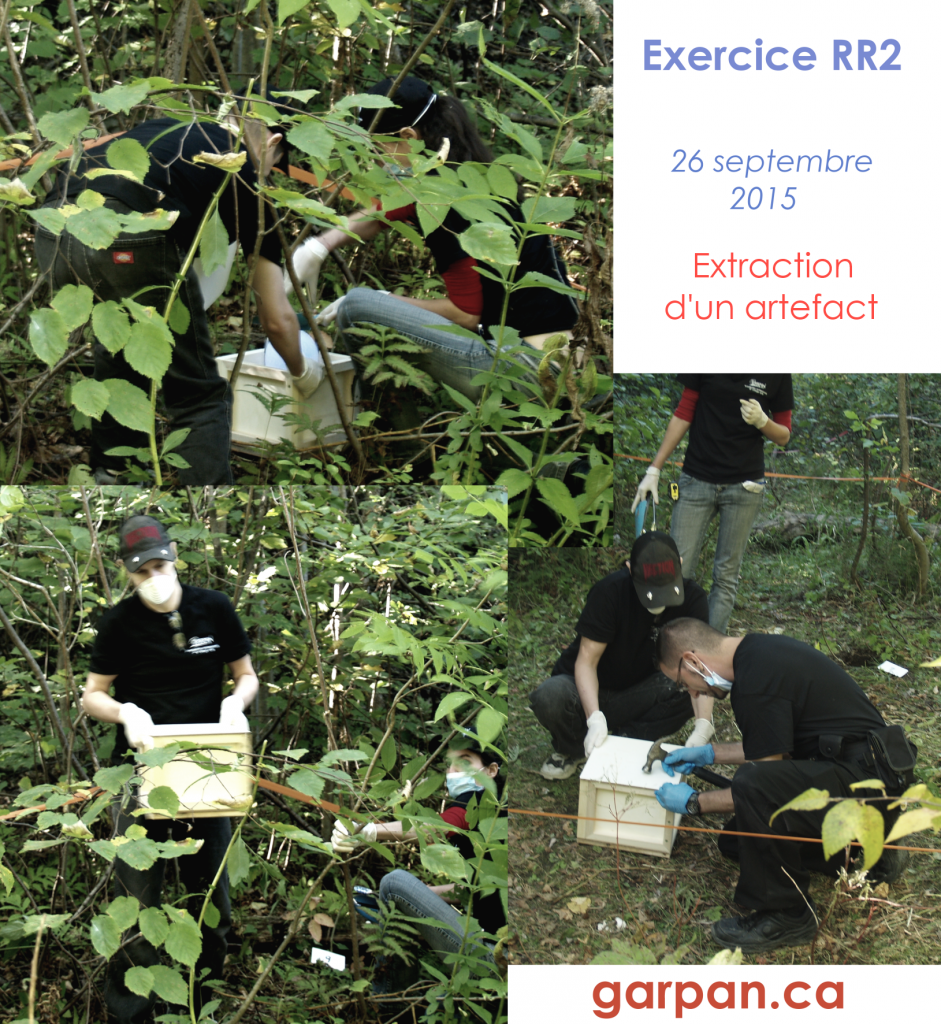
Step Four : retrieve and pack the artifacts for transport
- □ Receive samples and classifying them in a notebook noting. Indicate the sample number and its contents. Pack in boxes or crates.
- □ Excavate Carefully plaster molds and pack.
Fifth stage : finalizing the transaction and collect instruments
- □ Tighten the hardware used. Do not leave anything on the premises.

- □ Before leaving, check the list of items and tools made to be sure not to forget anything.
Guillaume Lamothe, the dispatcher reports
- □ Report laboratory samples for analysis.
*
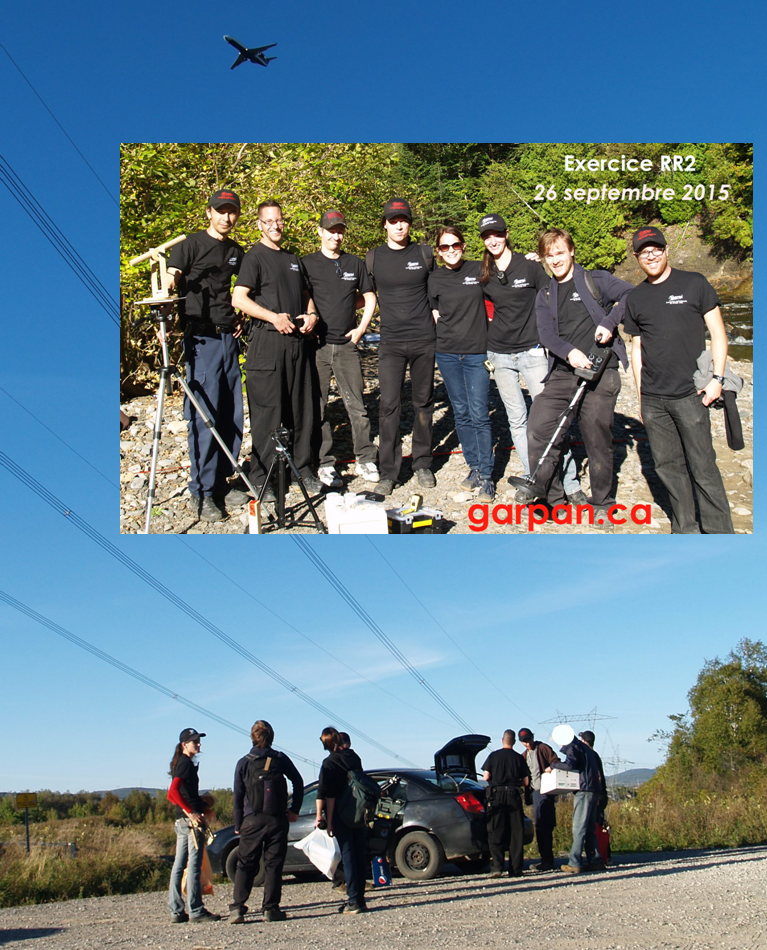
Support the GARPAN by donating !
(right column)


